
Date: 2025-10-05 Page is: DBtxt003.php txt00025157
CLEAN ENERGY
BLUE AND GREEN HYDROGEN
Inside the Global Race to Turn Water Into Fuel ... Hundreds of billions of dollars are being invested in a high-tech gamble to make hydrogen clean, cheap and widely available. In Australia’s Outback, that starts with 10 million new solar panels.
BLUE AND GREEN HYDROGEN
Inside the Global Race to Turn Water Into Fuel ... Hundreds of billions of dollars are being invested in a high-tech gamble to make hydrogen clean, cheap and widely available. In Australia’s Outback, that starts with 10 million new solar panels.

A dusty red-brown landscape stretches to the horizon. In the foreground, mining equipment digs at the edge of a large pit.
Original article: https://www.nytimes.com/2023/03/11/climate/green-hydrogen-energy.html
Peter Burgess COMMENTARY
I have been trying to digest the amazing scope of this hydrogen energy initiative in Australia. It is so much more than the generally bland and boring and routine of the daily news.
I am tring to explain to myself how a project like this did not come to my attention a long time ago. Of course, I can blame the 'media' industry but that does not seem to be a particularly satisfy conclusion.
Maybe it is something else. Perhaps it is a desire for a big corporate organization to do something important but to keep quiet about it for a variety of reasons. If it fails, then the failure won't be such an embarrassment. If it succeeds the project will be way ahead of the competitors and that will be good for everyone concerned. Making all of this highly visible at this stage has a lot of downside while also donating competitive advantage to others.
I am incredibly impressed by what is going on in this project in Australia.
Peter Burgess
Inside the Global Race to Turn Water Into Fuel
Hundreds of billions of dollars are being invested in a high-tech gamble to make hydrogen clean, cheap and widely available. In Australia’s Outback, that starts with 10 million new solar panels.
The Christmas Creek iron ore mine in Western Australia. Green hydrogen producers hope to find customers in the country’s huge mining industry, which currently relies on fossil fuels.Credit...
Written by Max Bearak ... Photographs by Giacomo d’Orlando
Bearak traveled across Western Australia, from ore mines to oil refineries to open expanses of the Outback.
March 11, 2023
For eons this has been a quiet, unremarkable place. Thousands of square miles of flat land covered in shrubs and red dirt. The sun is withering and the wind blows hard.
It is exactly those features that qualify this remote parcel of the Australian Outback for an imminent transformation. A consortium of energy companies led by BP plans to cover an expanse of land eight times as large as New York City with as many as 1,743 wind turbines, each nearly as tall as the Empire State Building, along with 10 million or so solar panels and more than a thousand miles of access roads to connect them all.
But none of the 26 gigawatts of energy the site expects to produce, equivalent to a third of what Australia’s grid currently requires, will go toward public use. Instead, it will be used to manufacture a novel kind of industrial fuel: green hydrogen.
This patch of desert, more than 100 miles from the nearest town, sits next to the biggest problem that green hydrogen could help solve: vast iron ore mines that are full of machines powered by immense amounts of dirty fossil fuels. Three of the world’s four biggest ore miners operate dozens of mines here.
Proponents hope green hydrogen will clean up not only mining but other industries by replacing fossil fuel use in steel making, shipping, cement and elsewhere.
Green hydrogen is made by using renewable electricity to split water’s molecules. (Currently most hydrogen is made by using natural gas, a fossil fuel.) The hydrogen is then burned to power vehicles or do other work. Because burning hydrogen emits only water vapor, green hydrogen avoids carbon dioxide emissions from beginning to end.
In the Pilbara region of Western Australia, and in dozens of spots around the globe endowed with abundant wind and sun, investors see an opportunity to generate renewable electricity so cheaply that using it to make green hydrogen becomes economical. Even if only some of the projects come to fruition, vast stretches of land would be duly transformed.
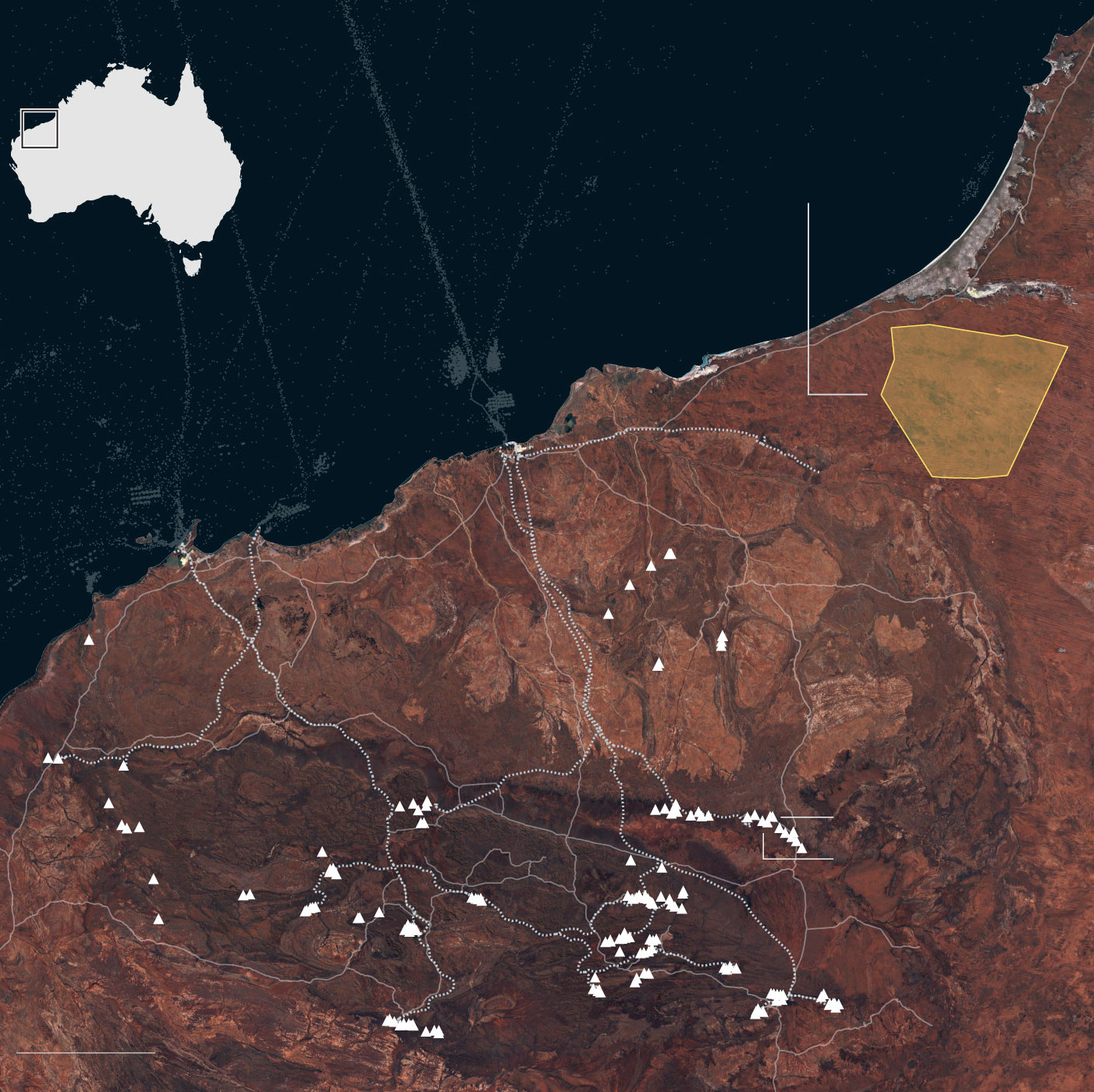
Note: Dots on cargo routes represent accumulated ship locationsSources: BP, MariTrace, Australian GovernmentBy Mira Rojanasakul/The New York Times
The project is one example of a global gamble, worth hundreds of billions of dollars, being made by investors including some of the most polluting industries in the world.
Last year, government subsidies sped up action in the European Union, India, Australia, the United States and elsewhere. The Inflation Reduction Act, the Biden administration’s landmark climate legislation, aims to drive the domestic cost of green hydrogen down to a quarter of what it is now in less than a decade through tax incentives and $9.5 billion in grants.
“We are about to jump from the starting blocks,” said Anja-Isabel Dotzenrath, who once led Germany’s biggest renewable energy company and now runs BP’s gas and low-carbon operations. “I think hydrogen will grow even faster than wind and solar have.”
Not everyone sees it that way. Challenges loom on every level, from molecular to geopolitical.
Some energy experts say green hydrogen’s business rationale is mostly hype. Doubters accuse its champions of self-interest or even self-delusion. Others see hydrogen as diverting crucial investment away from surer emissions-reduction technologies, presenting a threat to climate action.
Still, if the rosiest projections hold, green hydrogen in heavy industry could reduce global carbon emissions by 5 percent, if not two or three times that. In those scenarios, which are far from certain, hydrogen plays a crucial role in limiting global warming.
Fatih Birol, the Turkish economist who leads the International Energy Agency, said he seldom meets people who don’t find green hydrogen alluring, with its elegant elementality. His organization forecasts that green hydrogen will fulfill 10 percent of global energy needs by 2050.
He said the agency’s expectations were based on the fact that, if the world wants to limit warming to 1.5 degrees, “so much green hydrogen needs to be part of the game.”
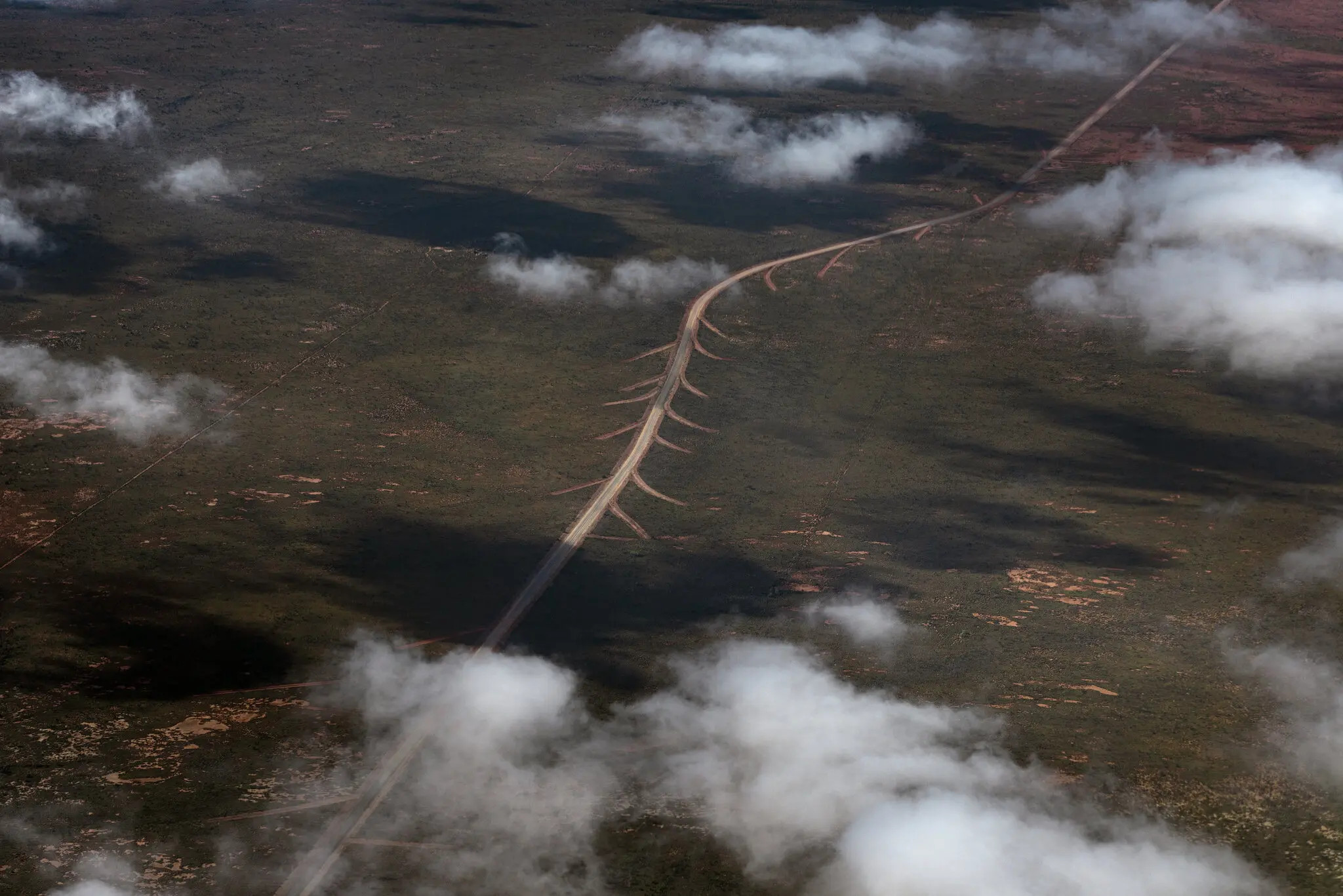
An aerial view of a train track running through a green landscape beneath wispy clouds. A railway for hauling iron ore in Western Australia.

A green-and-gray transport ship, docked in port, is loaded with ore by a rusty red-orange loading machine. Ore departs from Port Hedland for coal-burning steel mills across East Asia.

An outback landscape at dusk. The scene is mostly dark, with low shrubs visible in the foreground and a few rugged-looking trees in the middle distance. The sky is deep red along the horizon. Sunset in an area set aside by the Western Australian government for a green hydrogen hub.
A ‘Monstrous Challenge’
For green hydrogen to have a substantial climate impact, its most essential use will be in steel making, a sprawling industry that produces nearly a tenth of global carbon dioxide emissions, more than all the world’s cars.
In climate lingo, steel emissions are “hard to abate.” Blast furnaces, freight trains, cargo ships and the gargantuan trucks used in mining require heavy fuels like coal and oil. Even if they could be electrified (and, as a practical matter, today many can’t be) they would strain grids enormously.
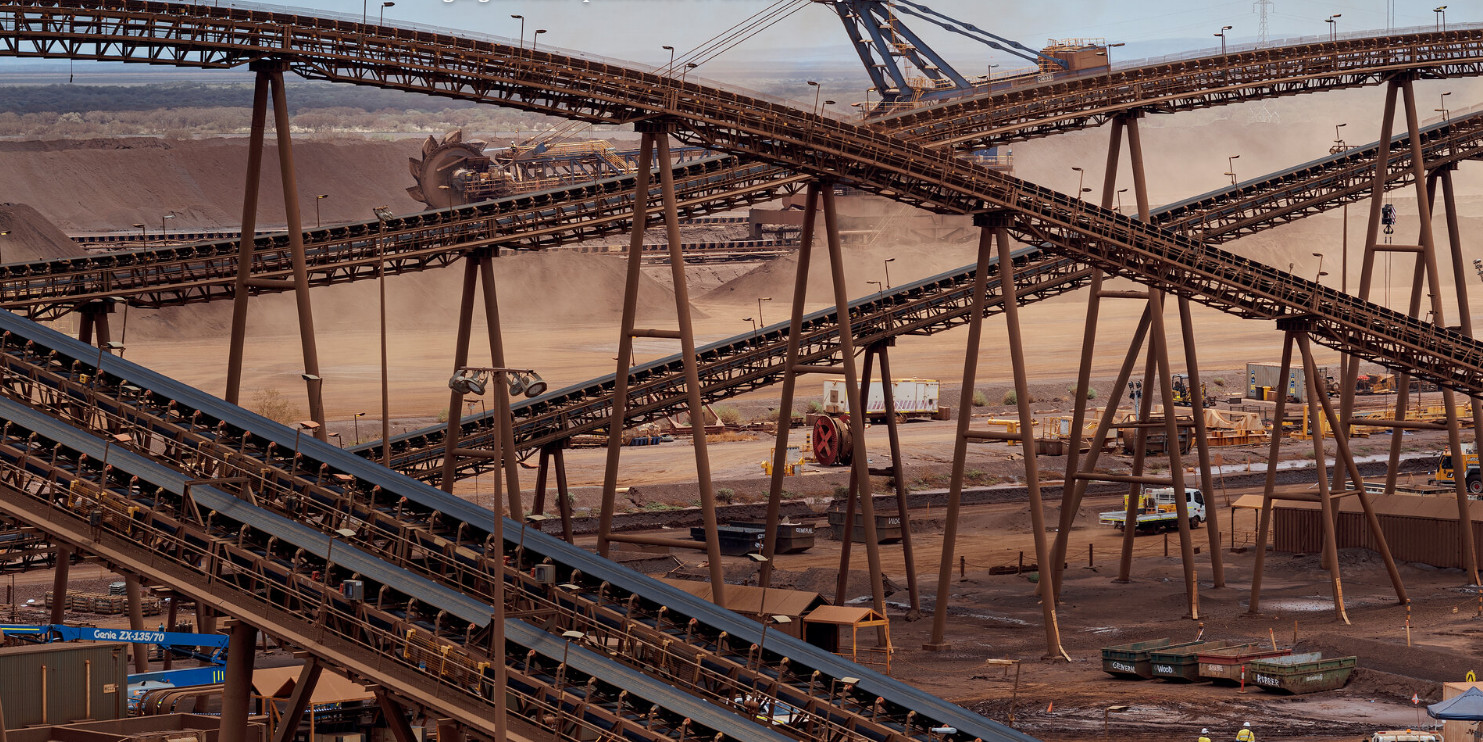
How much energy does a mine demand? A single ore hauler at the Christmas Creek mine guzzles gargantuan quantities of diesel every hour.
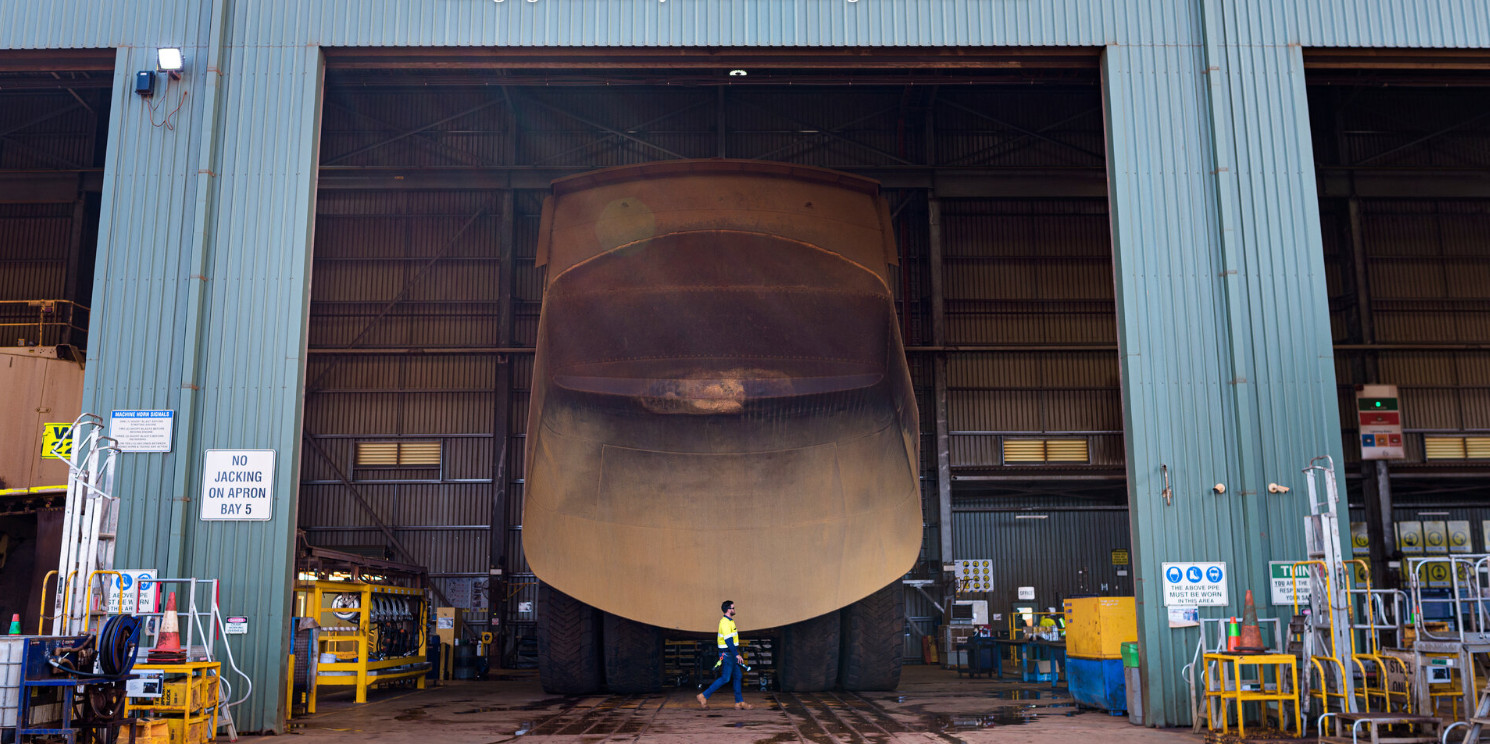
Each hauler operates nearly round the clock, covering enough ground in a year to circle the globe four times. ... And that’s just one truck among thousands of machines.

“We move a fair bit of dirt here,” one Christmas Creek employee said, his wit as dry as the dust that caked his boots.
Day and night, two-mile-long ore trains, weighing more than 90 million pounds, depart Christmas Creek for Port Hedland. From the port, an endless stream of cargo ships (once again, burning heavy fuel) sail for East Asia, where ore becomes steel in coal-burning mills.
Nearly 40 percent of the world’s iron ore comes from the Pilbara. Wherever you are, when you look out at the world, some of what you see is likely born of materials mined in and around Christmas Creek.
It wouldn’t be an overstatement to call the mine’s owner, Andrew Forrest, the most bullish of hydrogen’s backers. When he said two years ago that he was going to rapidly switch the mining operations of his company, Fortescue Metals Group, to running fully on electric batteries, green hydrogen and green ammonia, a fuel derived from hydrogen, he was “met with mirth,” he said recently.
“Back then there was a distinct, visible horizon of disbelief that the world could actually change,” said Mr. Forrest, who is also one of the richest people in the world. He’s adamant that there’s a market, even if others see folly.

Both Fortescue and BP envision themselves as vying for the lead in green hydrogen and have announced plans to invest hundreds of billions of dollars in projects across dozens of countries beyond Australia, from Oman to Mauritania to Brazil and the United States. Those would still account for only a smidgen of the hundreds of millions of tons the I.E.A. and others say would be needed to create a market in which green hydrogen was cheap enough that steel and concrete makers were convinced to convert their operations.
Even though both companies are hugely profitable, Australia’s government has made hundreds of millions of dollars available to them through subsidies and land allocations over the past two years, mostly in Western Australia, which is six times the size of California but has only 2 million people.
“Diesel has had 120 years to become plentiful and affordable,” said Jim Herring, who oversees Fortescue’s green industry development. “We want to scale hydrogen up in a tenth of that time. It’s a monstrous challenge, honestly.”
The ‘Absolute Zero’ Problem
An arid-looking landscape with low, scrubby shrubs and three sets of parallel train tracks running down the center of the frame. On the left-side track, rail cars full of reddish ore stretch to the horizon.
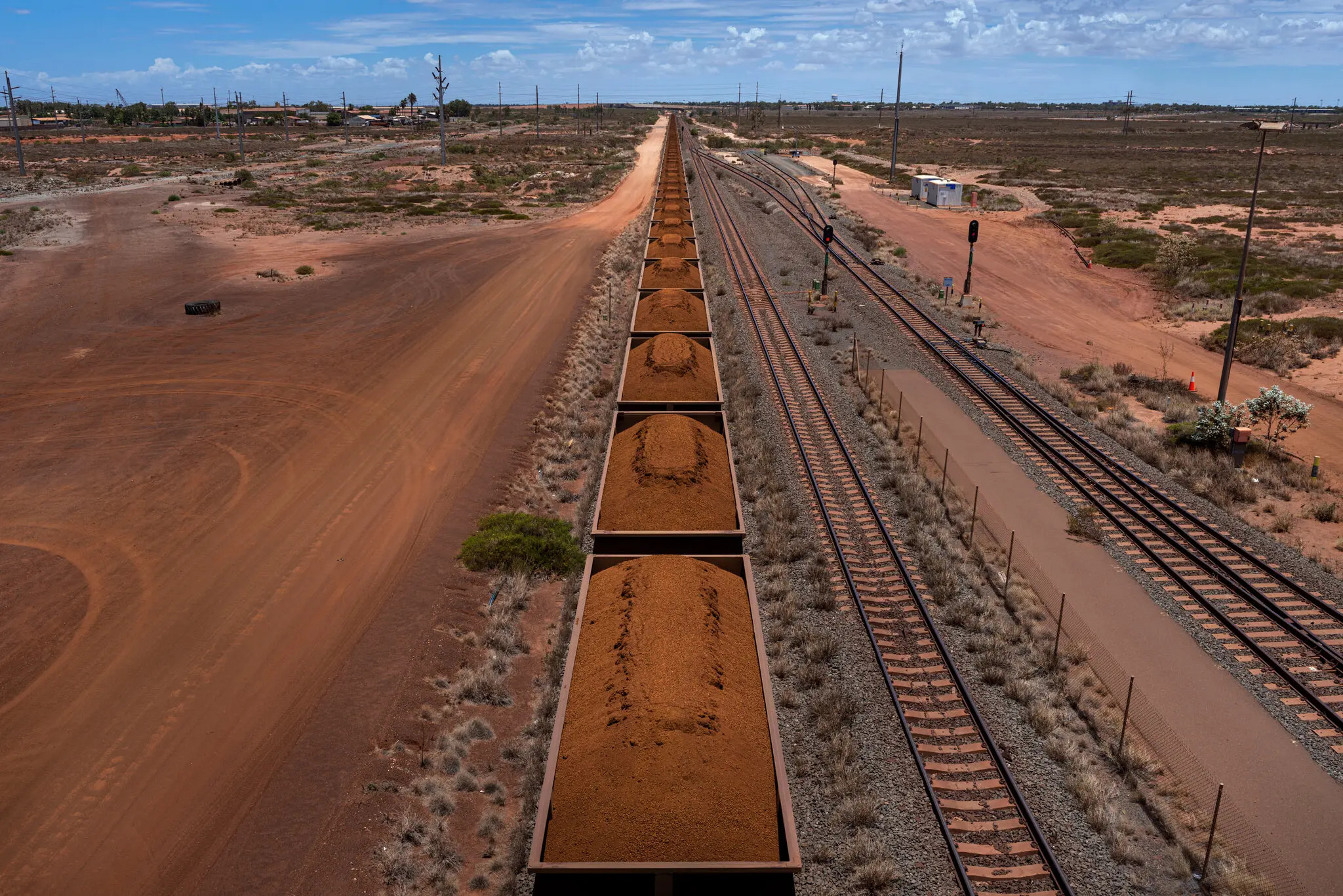
Iron ore on the way to Port Hedland.
To liquefy hydrogen for shipping, it must be chilled to negative 252.87 degrees Celsius, just shy of absolute zero, the theoretical temperature at which atoms are completely still. Hydrogen is also very flammable, making storage difficult.
They’re just two of many obstacles.
Some doubts come from hydrogen’s advocates themselves. “The economics of shipping aren’t looking good,” said Alan Finkel, the architect of Australia’s hydrogen subsidies. “I was naïve, I think, in the past to see export being the main demand driver,” he said in a recent interview. Instead, “There’s a lot of sense in ‘use it where you make it,’ and Australia is really ideally set up for that,” he said.
Some are even more skeptical.
Saul Griffith, a prominent inventor in renewable energy who started his career at an Australian steel mill, doesn’t see a big role for green hydrogen. To replace fossil fuels, he said, “the electricity you use to make it would have to be ridiculously cheap. And if you have that, why use it to make hydrogen?”
He calls it “not a fuel that will save the world.” Better to spend the money, he and others argue, on reducing renewable electricity costs so that nearly everything can be electrified.
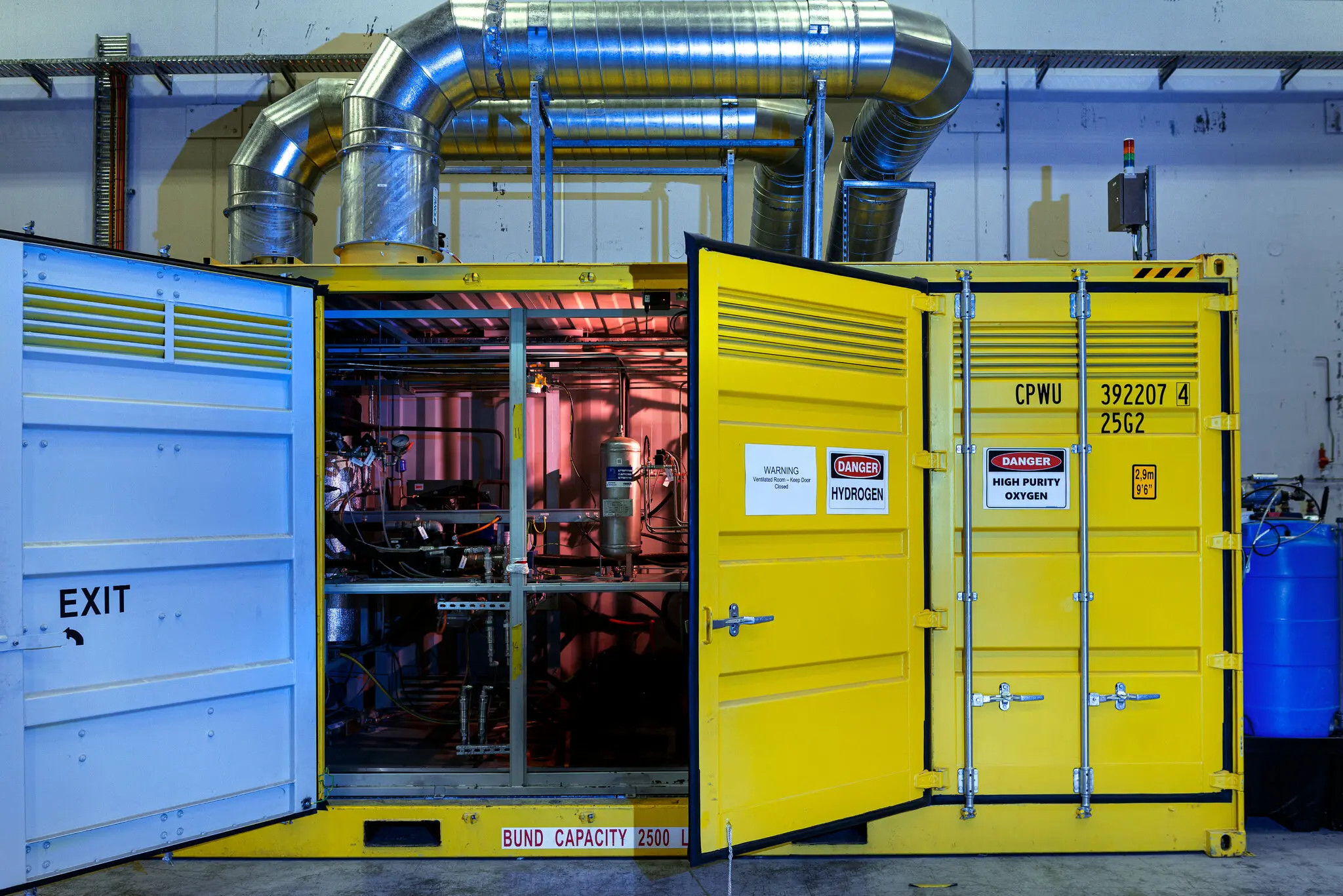
A large yellow container with several doors at what appears to be an industrial site. One door is open, revealing pipes, wires and canisters inside. A Fortescue electrolyzer, used to break water down into hydrogen and oxygen.
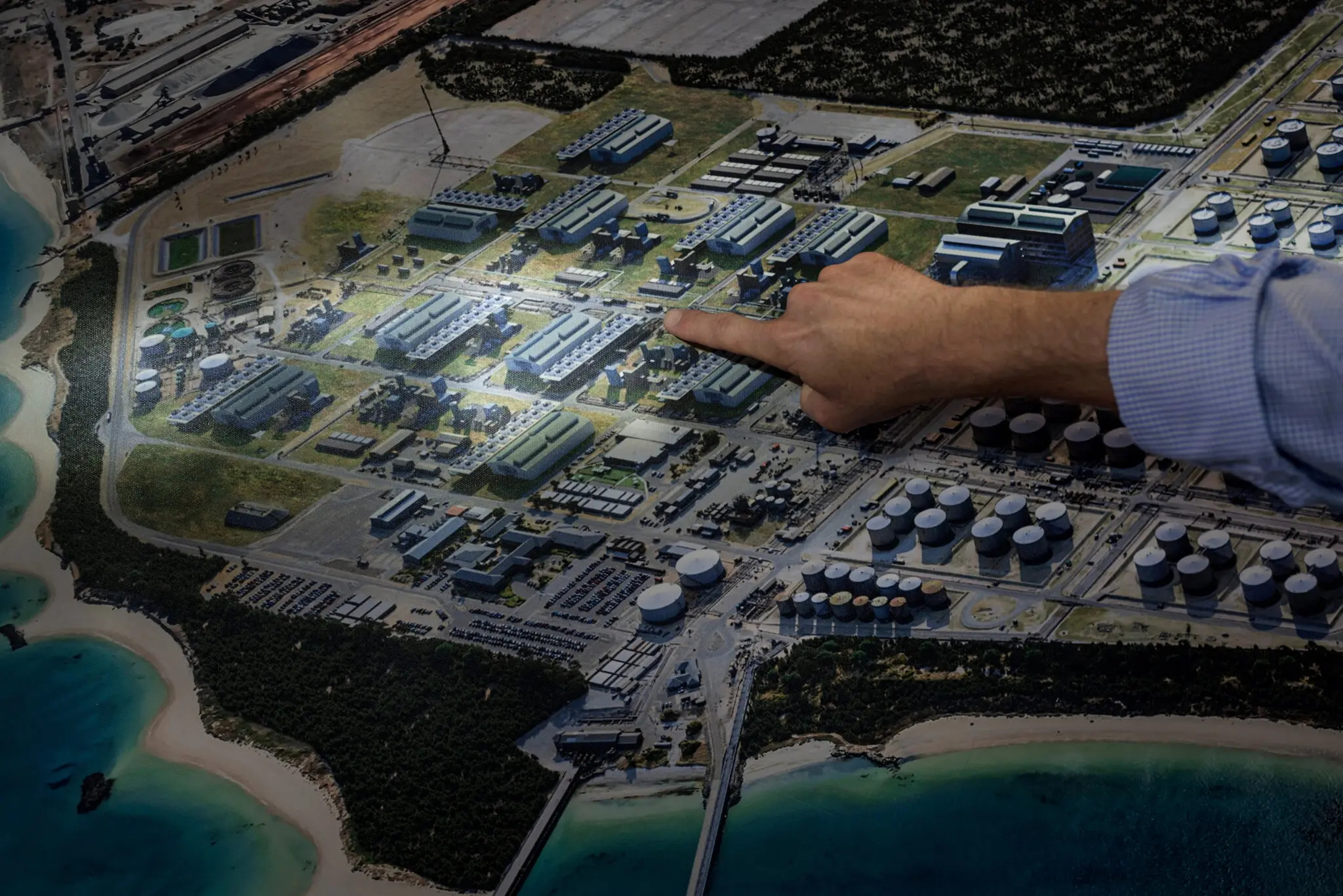
A concept image of an industrial site. A man’s arm is visible with his index finger pointing
to the center of the site. A rendering of a future BP hydrogen production facility.

An electric battery prototype for a Fortescue ore-hauling truck.
Two workers in high-visibility jackets, one yellow and one orange, stand before a large, blue
and white battery. It is taller than the men and looks somewhat like a giant Lego project.
Mr. Forrest says skeptics simply lack scientific knowledge. Fortescue, he said, will mix hydrogen with carbon dioxide so it is similar enough in consistency to liquefied natural gas that it can be transported in the same tankers.
“It’s is as simple as it sounds,” he said.
Mr. Forrest said he believed that, by decade’s end, he would save his shareholders at least $1 billion a year by converting mining operations to green hydrogen, and that his company would ultimately produce hydrogen at dozens of sites worldwide. BP says it will be exporting large quantities of green hydrogen and ammonia by then, too.
The interest taken in hydrogen by oil and gas companies concerns some climate activists. While BP, for instance, has presented green hydrogen as part of its pivot toward cleaner energy, the company this year scaled back plans to phase down oil and gas production over the coming decades amid record industrywide profits.
Energy companies already produce most of the world’s hydrogen fuel, but make it from natural gas, which is, of course, a fossil fuel. Some, including BP, stand to receive federal subsidies in the United States because the company plans to capture the carbon and store it rather than release it.
This is called “blue hydrogen,” and some critics consider it a loophole in the Biden legislation that incentivizes fossil fuel production.
Ms. Dotzenrath said opposing blue hydrogen amounted to letting the perfect be the enemy of the good. “That’s absolutely nonsense,” she said. “It’s ultimately all about the carbon intensity.”
But in Australia, at least, BP’s green hydrogen investments are pushing ahead.

This site, south of Perth, was once BP’s biggest oil refinery in Australia.

Over the next few years, parts will be dismantled, piece by piece, to make way for a new green hydrogen plant.
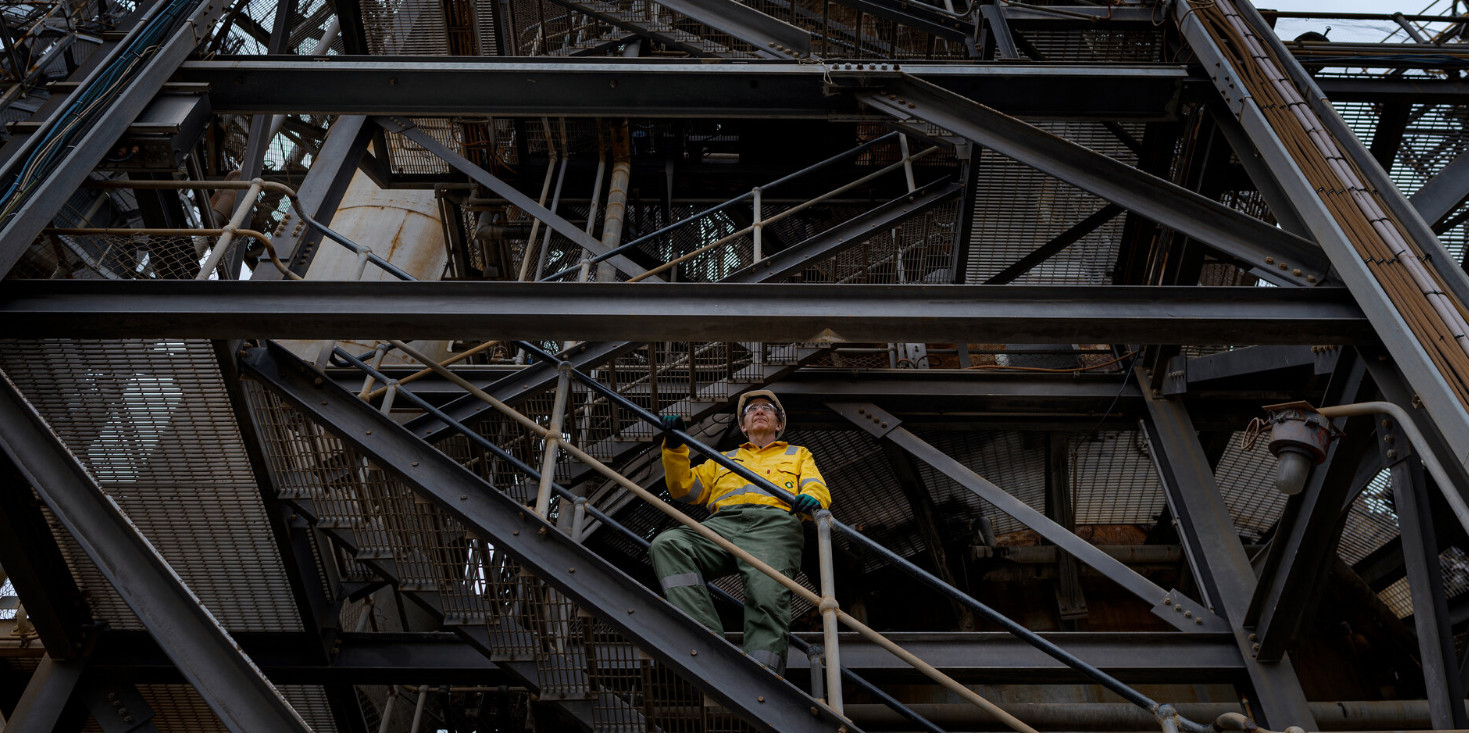
It’s emblematic of BP’s bet on green hydrogen as an industrial fuel.
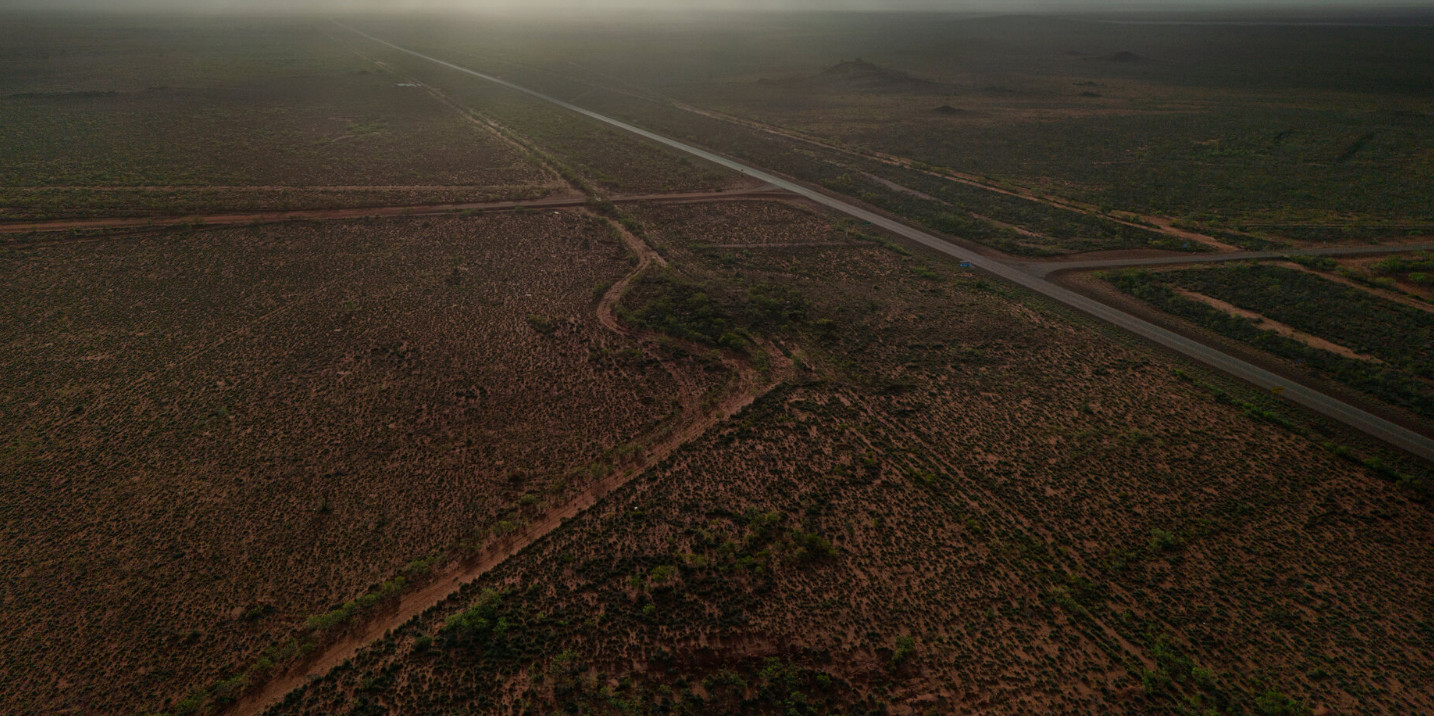
But the company’s bigger gamble is on the proposed 2,500-square-mile
solar and wind installation near the energy-hungry mines.
One of the impediments to huge green hydrogen projects is the short supply of electrolyzers, the machines that use electricity to split water molecules apart, isolating the hydrogen.
One issue is that China, which produces most of the world’s solar panels, wind turbines and renewable energy tech, hasn’t embraced electrolyzer production. Analysts said there was a shrewd calculus to that: China is heavily invested in coal, and much of that is tied to steel and cement production.
“It’s still a question: Will China go all in on hydrogen?” said Marina Domingues, a clean technology analyst at Rystad Energy.
Despite the challenges, dozens of countries are betting on green hydrogen. Last year, Spain, Portugal and France agreed to build an undersea hydrogen pipeline by 2030 that would eventually supply the rest of Europe. Japan, Taiwan and Singapore, which import nearly all their energy, have also said hydrogen will be key to becoming carbon neutral economies.
And Fortescue, for its part, is going into the business of making electrolyzers. This month in Australia it is opening its first factory, the world’s biggest.
The ‘Champagne’ of Energy
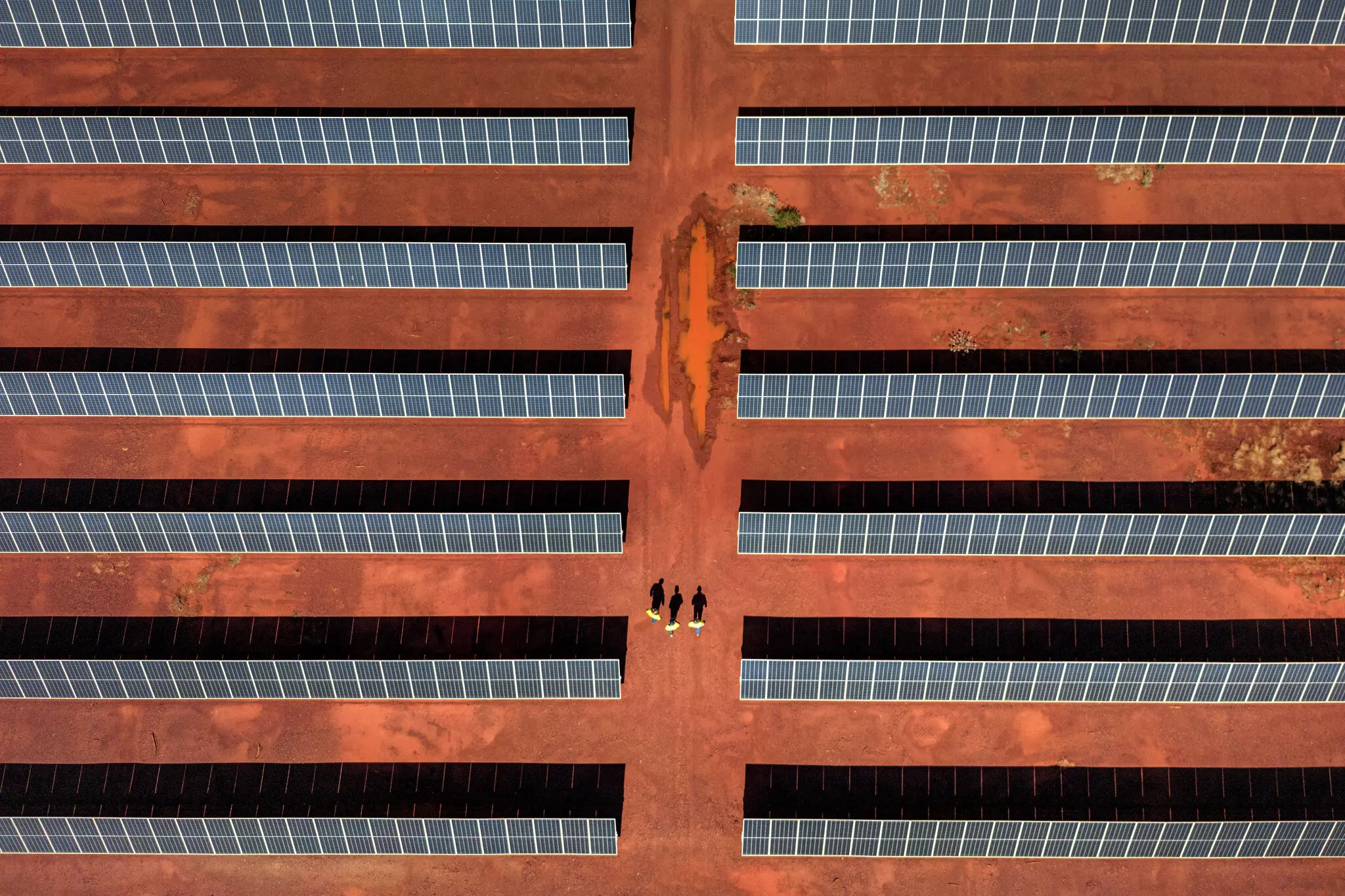
An aerial view of neatly aligned rows of solar panels on a reddish landscape. Three people are walking together amid the panels. The shadows are long. A solar farm that generates electricity for the Christmas Creek mine.
For Fortescue, the math is simple. Every year, each of its mines in the Pilbara expands outward at least a couple miles. While the company is developing 15-ton batteries to replace the diesel engines on some of its ore haulers, the mine at Christmas Creek, for instance, is already too sprawling for total reliance on batteries: New, battery-powered haulers just won’t have the range for the mines’ farthest reaches.
Fortescue expects 70 percent of its fleet to be running on batteries a decade from now — some powered by a mobile, 40-ton charger mounted on a vehicle resembling a military tank. But the rest would run on hydrogen or ammonia, replacing the billion-odd liters of diesel Fortescue uses annually.
BP is taking a more measured approach. Many of its global projects aim to produce blue hydrogen, which is cheaper, for now. Its green hydrogen projects in Australia, including the repurposed refinery near Perth, will come online in stages over a decade or longer.
Nevertheless BP, too, sees an inevitable shift toward green hydrogen driven by increasingly stringent regulations in the United States, European Union, Japan and South Korea.
In an “accelerated scenario” that envisions more ambitious emissions-reduction targets set by the nations of the world, BP predicts that, by 2050, green and blue hydrogen will be the predominant fuels in steel production in those countries and will also account for between 10 and 30 percent of fuel in aviation and between 30 and 55 percent in shipping.
“Hydrogen,” Ms. Dotzenrath said, “is the champagne of the energy transition.”
Max Bearak covers the geopolitics of climate change. He has been based in India, Kenya and Ukraine and reported from more than 30 countries. More about Max Bearak
A version of this article appears in print on March 12, 2023, Section A, Page 1 of the New York edition with the headline: The High-Tech Gamble on Green Hydrogen.
Latest News on Climate Change and the Environment
- Card 1 of 5 Ocean heat. The planet’s average sea surface temperature spiked to a record high in April and the ocean has remained exceptionally warm ever since. In July, widespread marine heat waves drove temperatures back up to near-record highs, with some hot spots nearing 100 degrees Fahrenheit, or nearly 38 Celsius.
- Card 2 of 5 Antarctic sea ice. It’s winter in the Southern Hemisphere, when ice typically forms around Antarctica. But this year, that growth has been stunted, hitting a record low by a wide margin. The sharp drop is alarming scientists and raising concerns about the ice’s vital role in regulating ocean and air temperatures, circulating ocean water and maintaining an important ecosystem.
- Card 3 of 5 A ban on incandescent light bulbs. Under new energy efficiency rules that took effect on Aug. 1, shoppers in the United States are no longer able to purchase most incandescent bulbs. Taking their place are LED lights, which have driven down electricity demand in American homes and helped lower the nation’s emissions of greenhouse gases.
- Card 4 of 5 A warning from the cradle of civilization. High temperatures and scarce water are drying out swaths of Iraq that were once part of a verdant region known as the Fertile Crescent. Climate change and desertification are to blame, scientists say. So are weak governance and the continued reliance on wasteful irrigation techniques.
- Card 5 of 5 Extreme heat. The world has entered what forecasters warn could be a multiyear period of exceptional warmth, one in which the warming effects of humankind’s continuing emissions of heat-trapping gases are compounded by El Niño, the recurring climate pattern typically associated with hotter conditions in many regions.